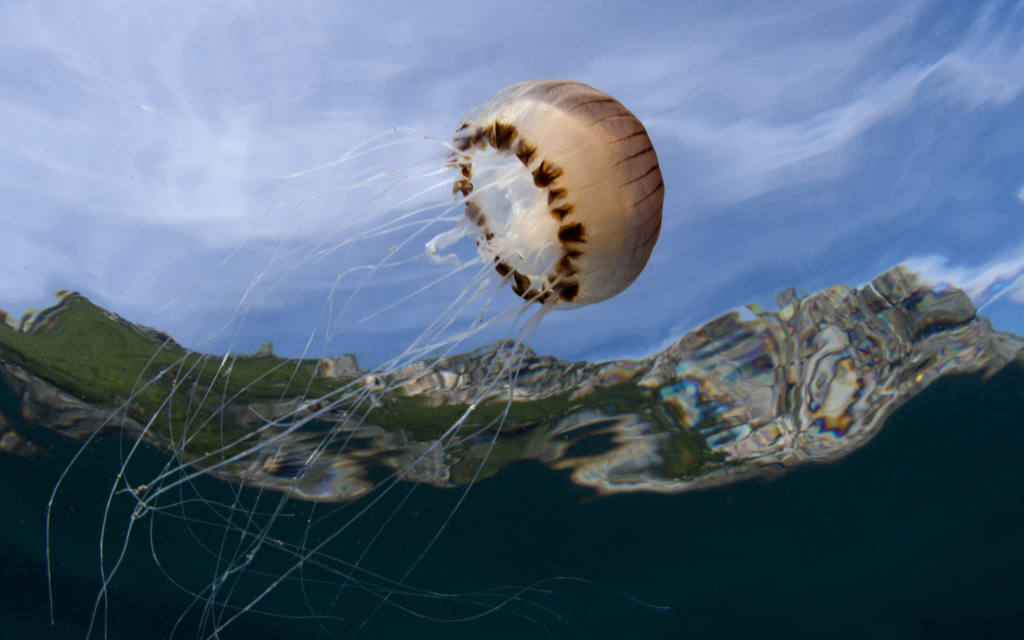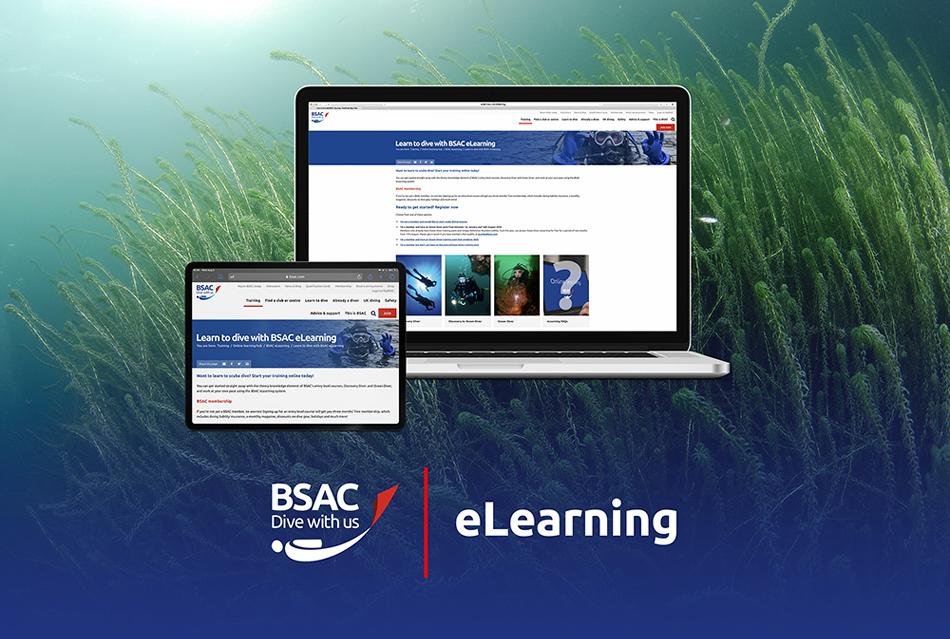
Michelle Haywood considers the movement techniques employed by jellyfish as they navigate in search of prey.
Jellyfish are ubiquitous in our seas, ranging in size from a few millimetres up to the dustbin-sized barrel jellyfish. The strange thing is that they are passive feeders. They don’t actively hunt their food, just stumble across it as opportunistic predators. The tentacles will catch anything that happens to drift or swim into them. Those tentacles have venom that kills the prey. Jellyfish are carnivores eating zooplankton (the larval stages of many marine creatures), fish eggs and small fish.
Once their prey is snagged on the tentacles, there is the challenge of ingesting and digesting it. After all, the purpose of eating anything is to take the biological molecules from your prey and use them for your own ends. Shorter oral arms pull the snared food towards the mouth. The mouth sits underneath the bell and is directly connected to the gastrovascular cavity or stomach. The stomach contains digestive enzymes which break down the structure of the prey and the molecules are absorbed into the cells of the stomach. The indigestible food is expelled via the mouth again.
There’s a bit of a problem with this approach. A jellyfish also uses its mouth for spitting out water to give it some propulsion. Digesting food interrupts this ability. So, when a jellyfish is eating it can’t swim. That means digestion has to be a fairly fast process because a jellyfish can’t move on a full stomach.
Larger jellyfish may also have a poisonous sting that they shoot out. This is triggered by something touching the tentacles. Paralysing prey is a sensible approach because there is a real possibility that the prey tries to escape and causes damage. It's much better to have your prey immobilised as you digest it (it's how I like my food too – not wriggling!).
Jellyfish use some of the energy for propelling themselves along. In fact, they are the ocean’s most efficient swimmers. They are not as fast and manoeuvrable as other swimming creatures such as salmon, tuna or sharks, which rely on muscle mass, but they are incredibly efficient. The jellyfish body is slightly elastic and it uses this attribute to recapture energy as it moves. This means it uses less energy to travel a greater distance than any other swimming animal.
To swim, the jellyfish opens its bell and then creates jet propulsion by squeezing its bell to a smaller volume. When a jellyfish contracts its body, two vortex rings (doughnuts of water rolling into themselves) are created. The first ring is shed in the wake as the jellyfish moves. As the bell of the jellyfish relaxes, the second vortex ring rolls under the edge of the bell and spins faster. This sucks water in and pushes the centre of the jellyfish, giving it a speed boost.
Such a technique is very energy efficient but only works for low speeds and fairly small body sizes. Jellyfish use approximately half the energy of any other marine creature to travel, so their cost of transport (as measured by how much oxygen they use to move) is really low.
Efficient movement means that there is more of the consumed energy available for growth and reproduction. So, there you have it, jellyfish may have no brain, only very small sensory cells on their tentacles and use their mouth as an anus, but they are the ocean’s most efficient swimming creature. Happily, their top speed is only a couple of centimetres per second!
Ready to start your scuba adventure? Join a BSAC club.
Send your postcode to hello@bsac.com and we'll help you find the right scuba club for you. Or if you fancy a chat call us 0151 350 6201 (Mon - Fri, 09:00 - 17:00).
You can also join BSAC Direct online today.
This column article was originally published in SCUBA magazine, Issue #111 February 2021. For more membership benefits, visit bsac.com/benefits.
Images in this online version may have been substituted from the original images in SCUBA magazine due to usage rights.

 Author: Michelle Haywood | Posted 08 Apr 2021
Author: Michelle Haywood | Posted 08 Apr 2021



